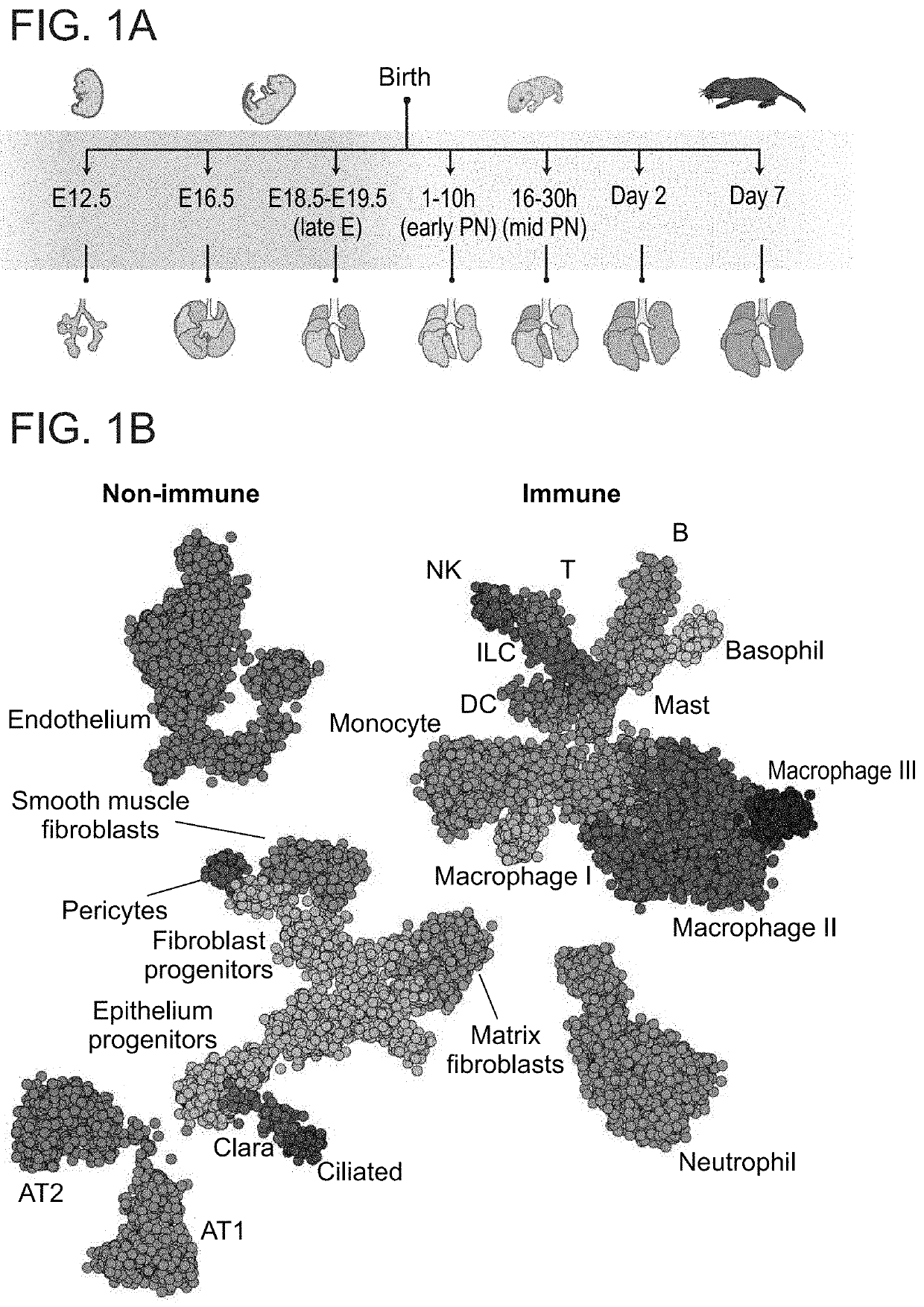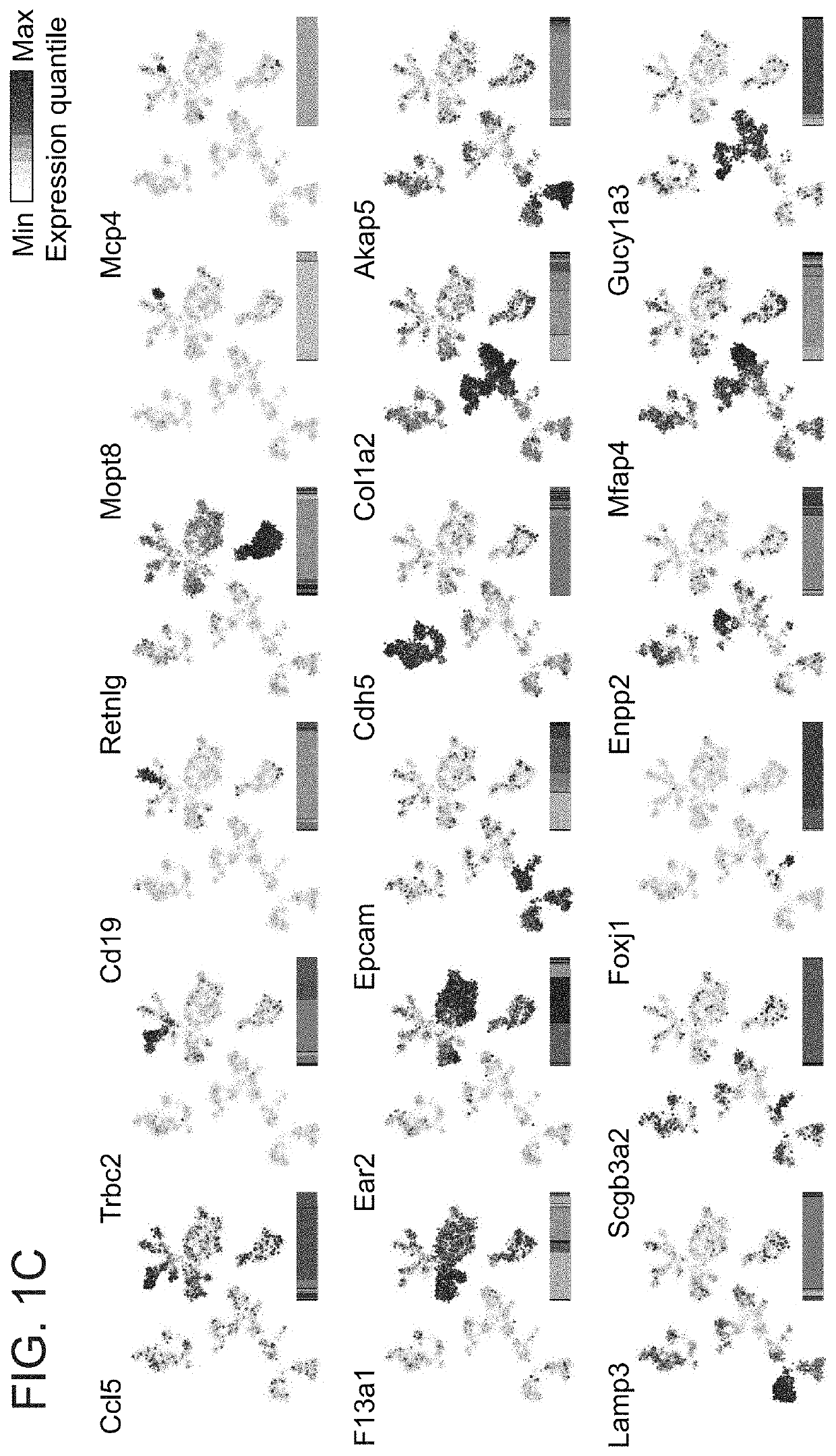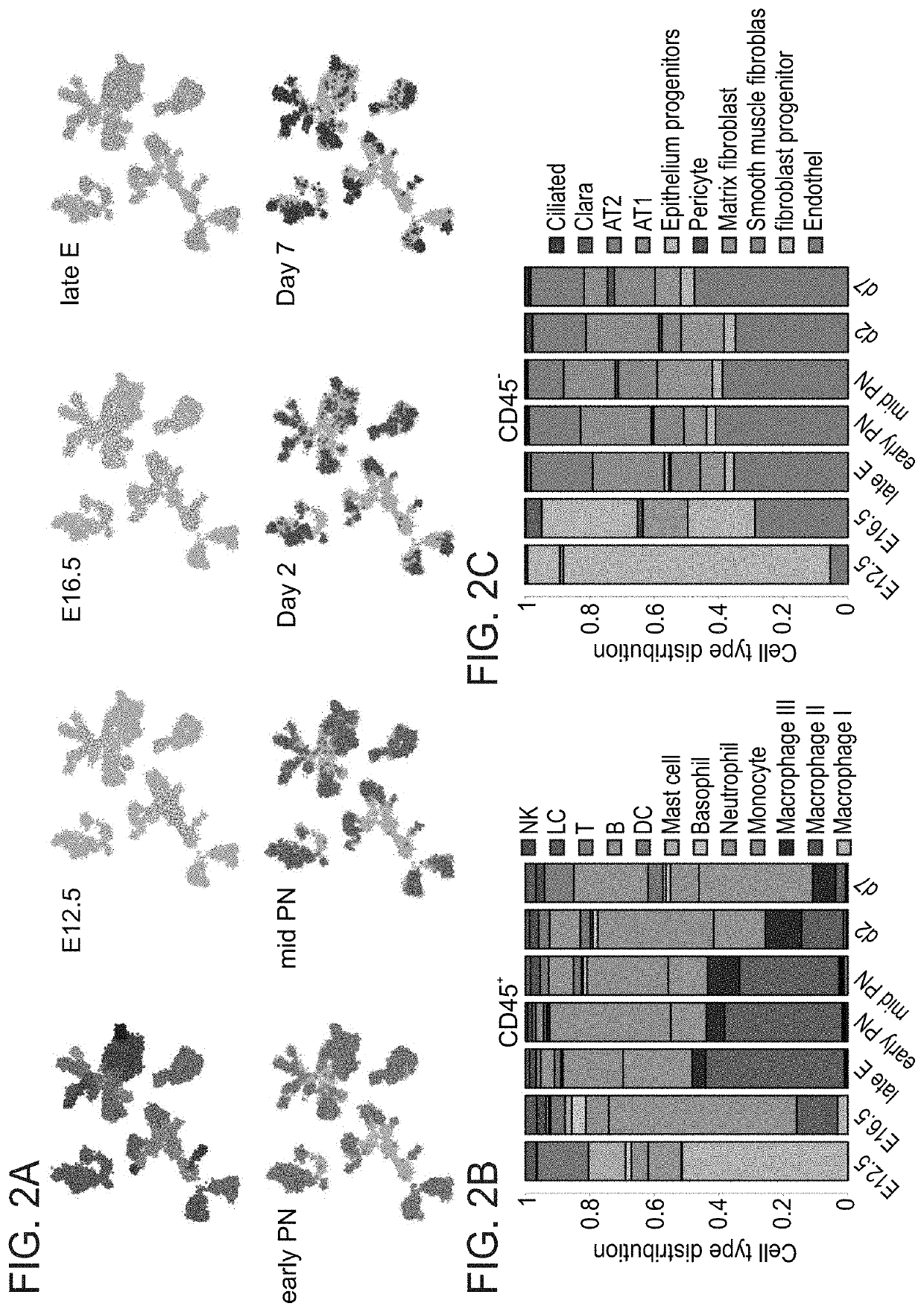Methods of modulating m2 macrophage polarization and use of same in therapy
- Summary
- Abstract
- Description
- Claims
- Application Information
AI Technical Summary
Benefits of technology
Problems solved by technology
Method used
Image
Examples
example 1
[0301]A comprehensive map of the lung cell types during development To understand the contribution of different immune and non-immune cell types and states for lung development and homeostasis, we collected single cell profiles along critical time points of lung development. In order to avoid biases stemming from cell-surface markers or selective tissue dissociation procedures, we combined a broad gating strategy and permissive tissue dissociation protocol, resulting in a comprehensive repertoire of the immune and non-immune cells located in the lung (not shown; Methods). We densely sampled cells from multiple time points of lung embryonic and postnatal development, and performed massively parallel single cell RNA-seq coupled to index sorting (MARS-seq) (Jaitin et al., 2014) (FIG. 1A; and not shown). We collected cells from major embryonic developmental stages: early morphogenesis (E12.5), the canalicular stage (E16.5) and the saccular stage (E18.5 - E19.5; Late E). We further colle...
example 2
[0302]Lung Compartmentalization is Shaped by Waves of Cellular Dynamics
[0303]During embryogenesis and soon after birth, the lung undergoes dramatic environmental changes with its maturation and abrupt exposure to airborne oxygen. Accordingly, our analysis shows that meta-cell composition varies widely at these time points (FIG. 2A). At the cell type level, the most prominent cellular dynamics in the immune and non-immune compositions were observed during pregnancy (FIGS. 2B-C). Notably, since tissue dissociation protocols might affect cell type abundances, they can only be regarded as relative quantities (not shown). At the earliest time point (E12.5), the immune compartment was composed mainly of macrophages (51% of CD45+ cells), specifically related to subset I, monocytes (10%) and mast cells (11%), whereas at the canalicular stage (E16.5) monocytes, macrophages (subset II), neutrophils and basophils were dominant (58%, 13%, 7% and 4% respectively) and the macrophage I subset was ...
example 3
[0305]Lung basophils broadly interact with the immune and non-immune compartments In multicellular organisms, tissue function emerges as heterogeneous cell types form complex communication networks, which are mediated primarily by interactions between ligands and receptors (LR) (Zhou et al., 2018). Examining LR pairs in single cell maps can potentially reveal central cellular components shaping tissue fate (Camp et al., 2017; Zhou et al., 2018). In order to systematically map cellular interactions between cells and reveal potential communication factors controlling development, we characterized LR pairs between all lung cell types (FIG. 3A). Briefly, we filtered all LR expressed in at least one meta-cell and associated each ligand or receptor with its expression profile across all cells and along the developmental time points, using a published dataset linking ligands to their receptors (Methods) (Ramilowski et al., 2015).
[0306]In the developing lung, modules of LR mainly clustered ...
PUM
| Property | Measurement | Unit |
|---|---|---|
| Time | aaaaa | aaaaa |
| Time | aaaaa | aaaaa |
| Volume | aaaaa | aaaaa |
Abstract
Description
Claims
Application Information
 Login to View More
Login to View More - R&D
- Intellectual Property
- Life Sciences
- Materials
- Tech Scout
- Unparalleled Data Quality
- Higher Quality Content
- 60% Fewer Hallucinations
Browse by: Latest US Patents, China's latest patents, Technical Efficacy Thesaurus, Application Domain, Technology Topic, Popular Technical Reports.
© 2025 PatSnap. All rights reserved.Legal|Privacy policy|Modern Slavery Act Transparency Statement|Sitemap|About US| Contact US: help@patsnap.com



